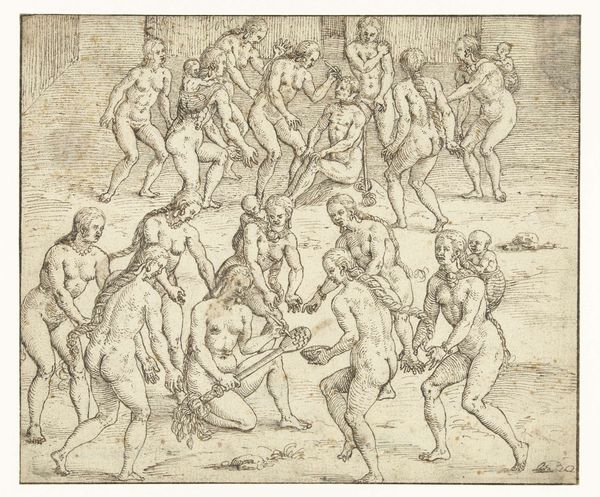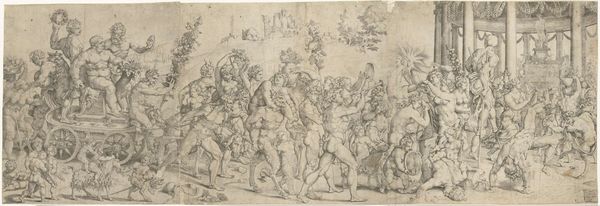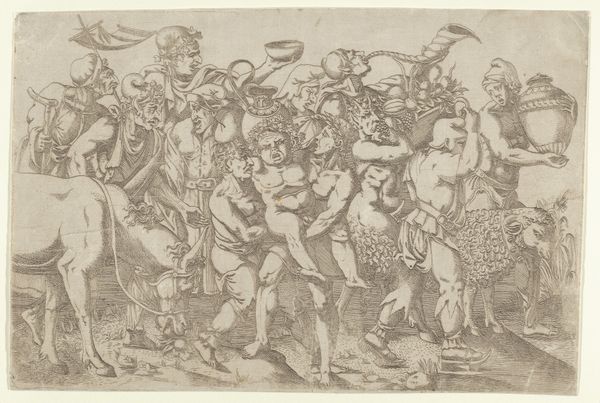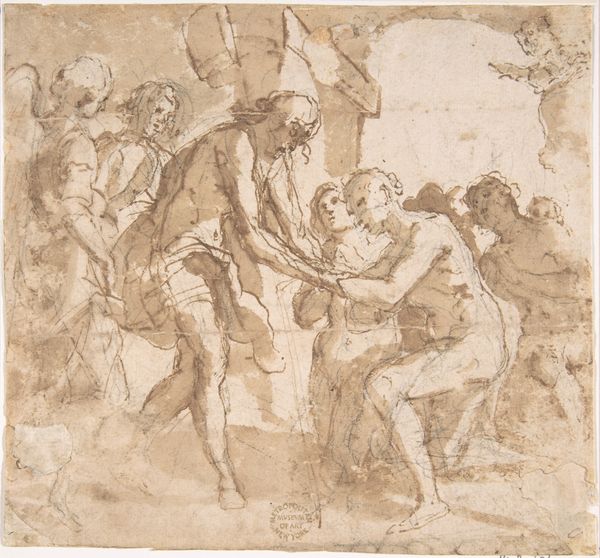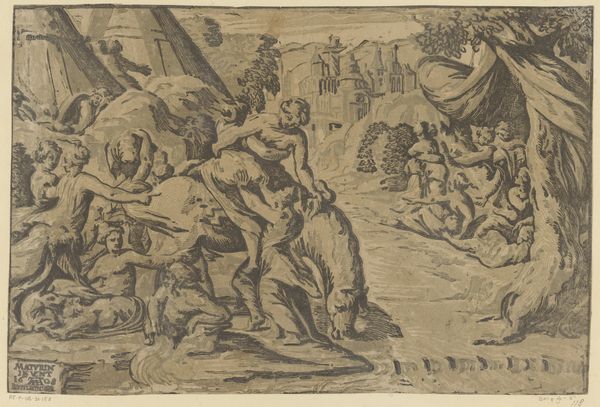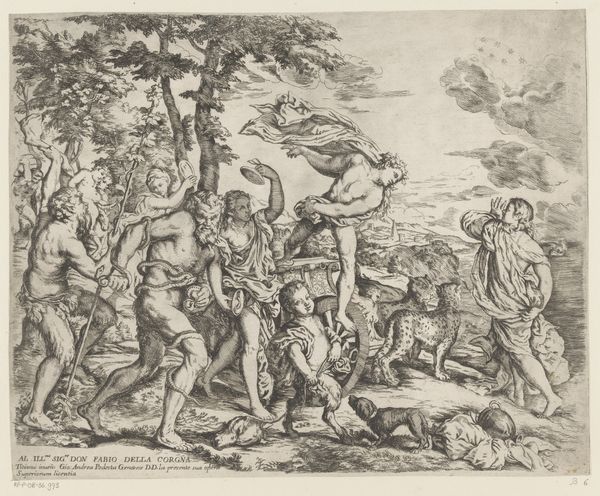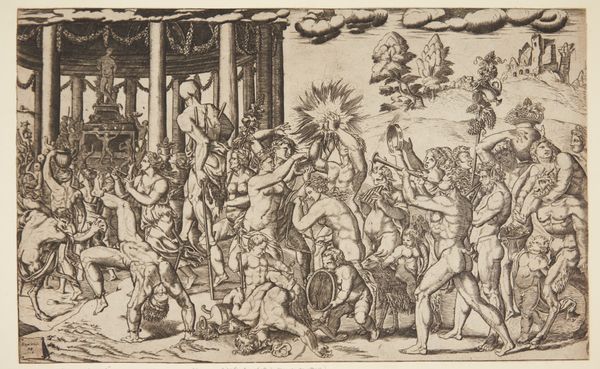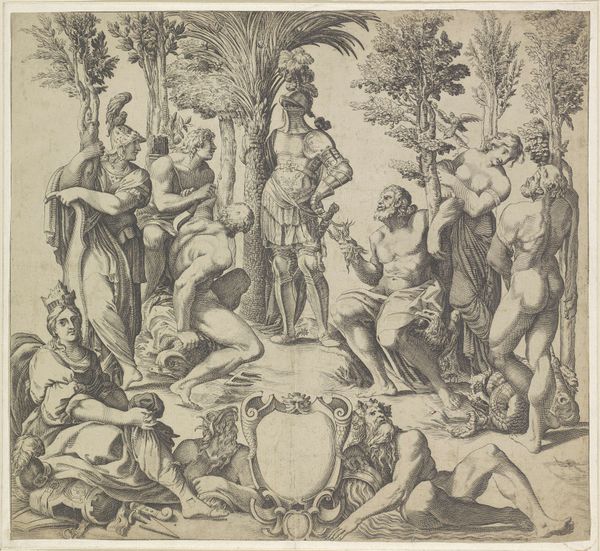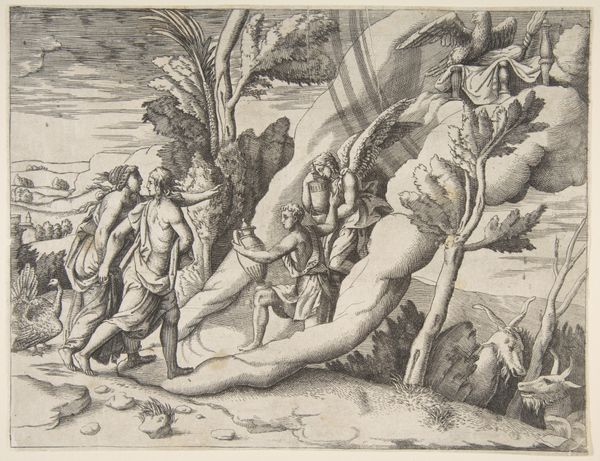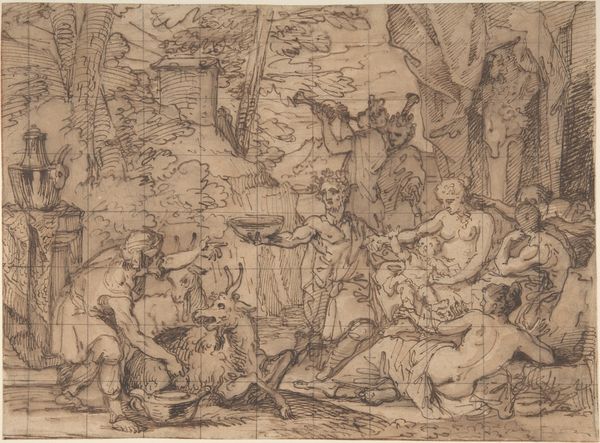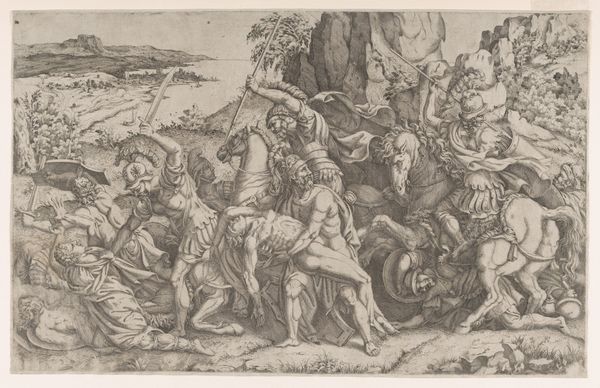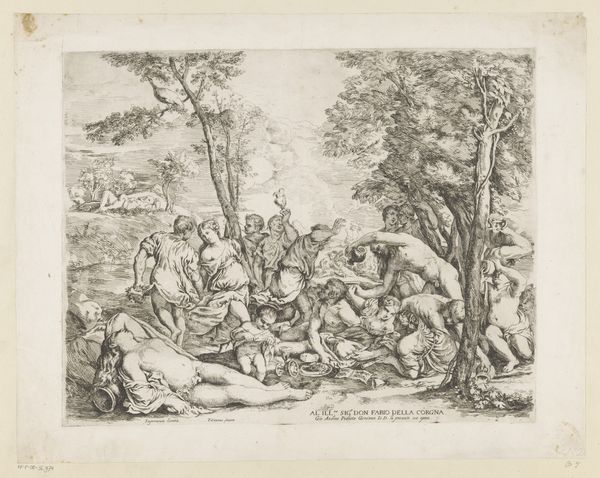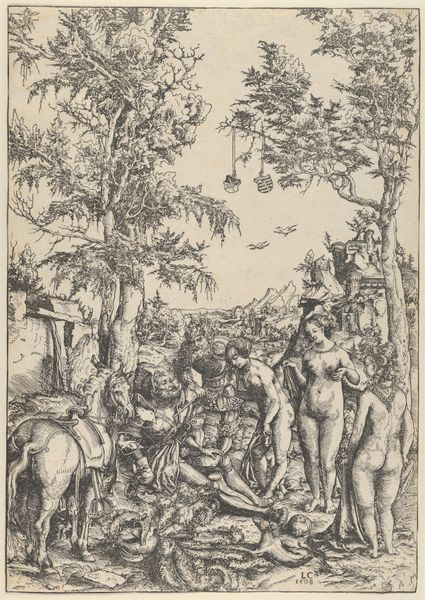
print, engraving
#
allegory
# print
#
landscape
#
figuration
#
11_renaissance
#
northern-renaissance
#
engraving
Dimensions: height 295 mm, width 315 mm
Copyright: Rijks Museum: Open Domain
Editor: Here we have Cornelis Bos’s 1543 engraving, "The Triumph of Bacchus, middle plate" at the Rijksmuseum. The flurry of bodies makes me think of the kind of controlled chaos you'd see at a wild party. How do you interpret this work? Curator: It’s intriguing, isn’t it? Given the historical moment, this print can be seen as more than just a celebration. The Triumph of Bacchus becomes a subversive expression when considering the rising tides of religious austerity during the Renaissance. Does this bacchanal resist or critique the moralizing forces that sought to suppress earthly pleasures? Editor: Interesting, I didn't consider that angle at all! Is that why there's such a chaotic element, as a subtle act of defiance? Curator: Perhaps. Bacchus, the god of wine and ecstasy, often symbolized freedom from restraint. Consider, too, the context of printmaking at the time. It was a medium that made art more accessible. Do you think that played a part in disseminating potentially subversive ideas? Editor: That's a great point; prints could spread quickly, and to wider audiences, like pamphlets. So this image of revelry, seen by many, could indeed carry a message of freedom against societal pressures? Curator: Precisely! Art in the Renaissance, while often commissioned by the powerful, could also function as a form of social commentary. Understanding that tension unlocks a new way to appreciate its layered meanings. Editor: This really shifted my understanding! Now I see this not just as a historical piece, but as a statement reflecting a cultural tug-of-war. Thanks for this fresh perspective! Curator: It is in the tension between representation and resistance that this piece comes alive, urging us to confront prevailing notions, which makes engaging with historical artwork such a compelling undertaking.
Comments
No comments
Be the first to comment and join the conversation on the ultimate creative platform.
